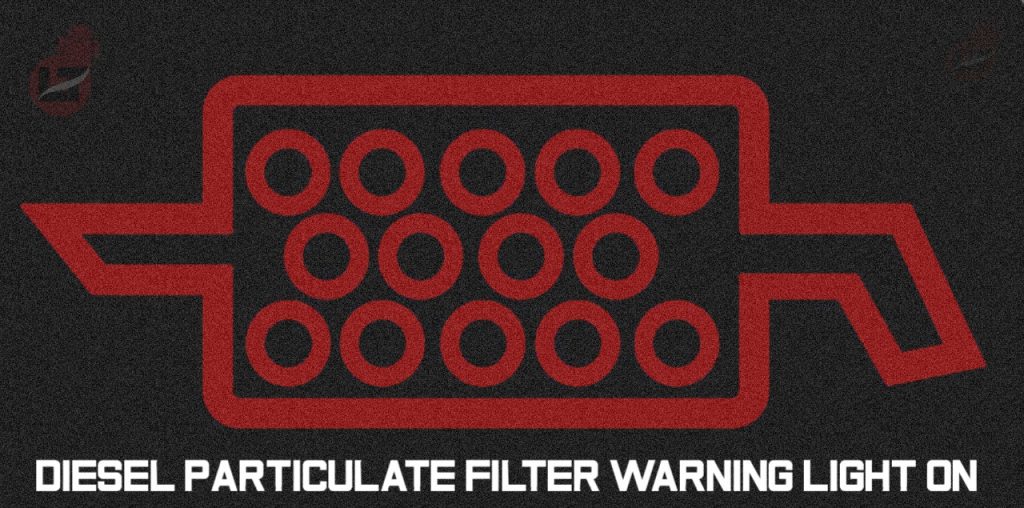Introduction

Image: autoworlduk.blogspot.com
Diesel particulate filters (DPFs) are essential components of diesel engines, playing a crucial role in reducing harmful emissions. When a DPF warning light illuminates, it can be a cause for concern, indicating a potential issue with the filter or related systems. Understanding the underlying causes and proper repair measures is imperative to ensure optimal engine performance and environmental compliance.
Understanding Diesel Particulate Filters
DPFs are designed to trap and retain soot particles produced by diesel engines. These particles, if left untreated, can contribute to air pollution and respiratory health issues. DPFs function by allowing exhaust gases to pass through a honeycomb-like structure with microscopic pores that capture the soot particles while allowing the cleaner gases to escape.
Over time, as soot accumulates within the DPF, it can restrict the flow of exhaust gases, leading to a buildup of backpressure in the exhaust system. To prevent excessive backpressure, the vehicle’s engine control module (ECM) initiates a process called regeneration, which burns off the accumulated soot particles and restores the DPF’s efficiency.
Causes of DPF Warning Light Illumination
Several factors can trigger the DPF warning light, including:
-
Soot Accumulation: As mentioned earlier, excessive soot buildup within the DPF can restrict exhaust flow, leading to the warning light’s illumination.
-
Regeneration Issues: DPF regeneration requires specific operating conditions, such as high exhaust gas temperatures and engine load. If these conditions are not met, regeneration may be incomplete or not initiate at all, resulting in continued soot accumulation and warning light illumination.
-
Sensor Malfunctions: DPF pressure sensors monitor the pressure differential across the filter and send signals to the ECM. If these sensors malfunction, they may provide erroneous readings, leading to false warning light activations.
-
Injector or Turbocharger Issues: Faulty injectors or turbochargers can contribute to increased soot production, overwhelming the DPF’s capacity and triggering the warning light.
-
Excessive Idling: Prolonged idling can prevent the DPF from reaching the necessary temperatures required for regeneration.
Diagnosing and Repairing DPF Warning Light Issues
To address DPF warning light problems, a proper diagnosis is essential:
-
Code Retrieval: Using an OBD-II scanner, diagnostic trouble codes (DTCs) can be retrieved from the vehicle’s ECM, providing insight into the specific issue.
-
Visual Inspection: Visually inspecting the DPF for physical damage, cracks, or excessive soot accumulation can help identify potential problems.
-
Differential Pressure Measurement: Measuring the pressure drop across the DPF can indicate the severity of soot loading and the effectiveness of regeneration.
-
Sensor Testing: DPF pressure sensors can be tested using specialized diagnostic tools to assess their functionality.
-
Regeneration Monitoring: Observing the regeneration process through scan tool data or exhaust temperature readings can reveal issues with the regeneration system.
Repair Options
Depending on the diagnosis, various repair options may be necessary:
-
Manual Regeneration: In some cases, forced manual regeneration can be initiated using a scan tool to burn off excess soot.
-
DPF Cleaning: Specialized cleaning techniques can remove accumulated soot from the DPF without requiring replacement.
-
DPF Replacement: If the DPF is severely damaged or cannot be cleaned effectively, replacement may be necessary.
-
Sensor Replacement: Faulty DPF sensors require replacement to ensure accurate readings.
-
Injector or Turbocharger Repairs: Underlying issues with injectors or the turbocharger may need to be addressed to reduce excessive soot production.
Preventing DPF Warning Light Recurrence
To prevent recurring DPF warning light issues, several measures can be taken:
-
Scheduled Maintenance: Regular oil changes and air filter replacements ensure optimal engine health and reduce soot production.
-
Avoid Excessive Idling: Limit idling to minimize soot accumulation and allow for proper regeneration.
-
Use Appropriate Fuel: Using low-sulfur diesel fuel helps prevent premature DPF clogging.
-
Monitor Driving Habits: Avoiding short trips and maintaining higher engine speeds during highway driving contribute to DPF regeneration.
Conclusion
Diesel particulate filters play a critical role in reducing harmful emissions, and a warning light related to the DPF should be addressed promptly. Understanding the causes, diagnosis, and repair options empowers drivers to maintain optimal engine performance, minimize environmental impact, and prevent costly repairs in the future.

Image: www.vautobasics.com
Diesel Particulate Filter Warning Light How To Fix